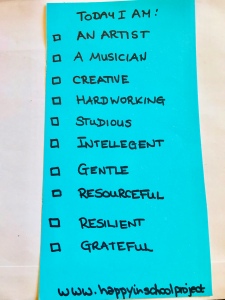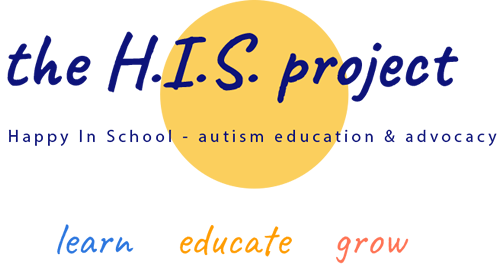It’s well-evidenced that the parts of the brain responsible for organisation and forward planning, are impaired in children and young people with ADHD. This is in addition to possible emotional regulation issues, anxiety, impulsivity, learning disability or even autistic traits. (It is common for ADHD to co-exist with autism).
If the anxiety wasn’t there at the outset, unfortunately, it often appears as the child reaches puberty and adolescence, as their impairments can become more noticeable. There are many studies about the positive impact of medications and how they can improve brain function in children with ADHD, to enable them to achieve and succeed in education. However, finding the right dosage and drug administration routine can be tricky, as many parents will confirm.

Words to encourage imagination & modify behaviour
One of the things we focus on in the #happyinschool sessions is discussing practical solutions and strategies to help support our children in school. Visuals are a highly effective learning tool for children with attention issues because:
- They are clear, bold uncluttered with a DIRECT MESSAGE
- Easy to UNDERSTAND
- Colour and pictures taps into earlier LEARNING centres of the brain
I have created a selection of brightly coloured cards, which are well-received in sessions and work quite well at home too! What do you think of these confidence building cards? The first one ‘Today I Am’ is deigned to stimulate the imagination, pretending to someone else can be immensely freeing for a child who feels inhibited in themselves. Use of the words I AM is easier to understand, as asking a child how they feel can be difficult for them to answer or articulate. This is the basic premise of acting, using pretence to temporarily free yourself.
The second one ‘Everything is Possible’ is designed as a counter-balance over-blown BIG feelings, especially feelings about failure. It’s another way of saying: ‘better to have tried and failed, than not to have tried at all.’

Everything is possible – words to encourage resilience
And the last one, ‘What am I thinking? is written to ‘break-in’ to the pattern of negative thinking. Some children struggle with the idea of thinking ‘positive thoughts’ it can be a bit too abstract and difficult to do (their circumstances may be very challenging, making it difficult to even think of anything positive.) Parents, teachers – would love to hear your thoughts! Whereas, asking the negative thought to go away puts the child in control. If they can do this well, then that would be a good time to discuss what positive thought would they like to put in its place!

Words to help awareness of thought
If you need or someone you know needs 1-2-1 support or advice or would like a #happyinschool presentation at your child’s school or place of learning please contact Suzy Rowland on the email below. Dates of future group sessions on the website:
[contact-form][contact-field label=”Name” type=”name” required=”true” /][contact-field label=”Email” type=”email” required=”true” /][contact-field label=”Website” type=”url” /][contact-field label=”Message” type=”textarea” /][/contact-form]
